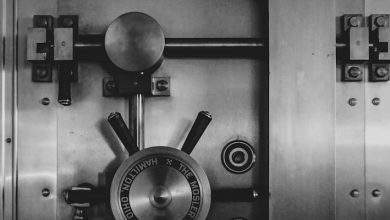How to Analyze Crypto Market Trends Using Charts

- Understanding Different Chart Types in Crypto Analysis
- Identifying Key Support and Resistance Levels on Price Charts
- Utilizing Technical Indicators to Confirm Market Trends
- Spotting Reversal Patterns on Crypto Charts
- Analyzing Trading Volume for Market Confirmation
- Using Chart Patterns to Predict Future Price Movements
Understanding Different Chart Types in Crypto Analysis
When analyzing trends in the crypto market, it is essential to understand the different types of charts that can be used for technical analysis. By utilizing various chart types, traders and investors can gain valuable insights into price movements and make informed decisions.
One of the most common chart types used in crypto analysis is the line chart. This type of chart displays the closing prices of an asset over a specified period. Line charts are useful for identifying trends and patterns over time, making them ideal for long-term analysis.
Candlestick charts are another popular option for crypto traders. These charts provide a more detailed view of price movements by showing the open, high, low, and close prices for a specific time frame. Candlestick charts are valuable for short-term analysis and are often used to identify potential reversal points in the market.
For a more comprehensive view of price movements, traders may turn to bar charts. Bar charts display the open, high, low, and close prices for a given period in a simple, easy-to-read format. Bar charts are versatile and can be used for both short-term and long-term analysis of crypto assets.
Finally, traders may use advanced chart types such as Renko charts or Heikin Ashi charts to gain unique perspectives on price movements. Renko charts focus solely on price movements and filter out noise, while Heikin Ashi charts use averages to smooth out price fluctuations. These advanced chart types can provide valuable insights for experienced traders looking to refine their analysis.
Identifying Key Support and Resistance Levels on Price Charts
Identifying key support and resistance levels on price charts is crucial when analyzing crypto market trends. Support levels represent the price points where a particular asset tends to find buying interest, preventing it from falling further. Resistance levels, on the other hand, are price points where selling interest tends to be strong, preventing the asset from moving higher.
To identify these key levels on price charts, traders often look for areas where the price has reversed direction multiple times in the past. These areas are considered significant because they indicate that a large number of market participants are paying attention to them. This increased attention can lead to price reactions when the asset approaches these levels again.
Traders can use various technical analysis tools to help identify support and resistance levels, such as trendlines, moving averages, and Fibonacci retracement levels. By analyzing historical price data and identifying these key levels, traders can better understand the potential price movements of a particular asset and make more informed trading decisions.
In conclusion, identifying key support and resistance levels on price charts is an essential part of analyzing crypto market trends. By paying attention to these levels and using technical analysis tools, traders can gain valuable insights into market behavior and improve their trading strategies.
Utilizing Technical Indicators to Confirm Market Trends
When analyzing crypto market trends using charts, it is essential to utilize technical indicators to confirm the direction of the market. These indicators provide valuable insights into the strength and momentum of a trend, helping traders make informed decisions.
One commonly used technical indicator is the Moving Average, which smooths out price data to identify trends over a specific period. By comparing different moving averages, traders can determine whether a trend is gaining strength or losing momentum.
Another important technical indicator is the Relative Strength Index (RSI), which measures the speed and change of price movements. An RSI value above 70 indicates that an asset may be overbought, while a value below 30 suggests it may be oversold.
Additionally, the Moving Average Convergence Divergence (MACD) indicator is useful for identifying changes in a trend’s momentum. Traders look for crossovers between the MACD line and the signal line to confirm buy or sell signals.
By incorporating these technical indicators into their analysis, traders can gain a better understanding of market trends and make more informed trading decisions. It is essential to use a combination of indicators to confirm trends and avoid relying on a single signal for decision-making.
Spotting Reversal Patterns on Crypto Charts
When analyzing crypto market trends using charts, it is essential to be able to spot reversal patterns. These patterns can provide valuable insights into potential changes in the market direction, allowing traders to make informed decisions. By identifying reversal patterns early on, traders can take advantage of opportunities to enter or exit positions at optimal times.
One common reversal pattern to look out for is the head and shoulders pattern. This pattern typically indicates a reversal from bullish to bearish market conditions. It consists of a peak (the head) flanked by two smaller peaks (the shoulders) on either side. When the price breaks below the neckline connecting the lows of the two shoulders, it is a signal that a trend reversal may be imminent.
Another reversal pattern to watch for is the double top or double bottom pattern. A double top pattern occurs when the price reaches a high point, retraces, and then fails to surpass the previous high, forming two peaks at a similar level. Conversely, a double bottom pattern forms when the price reaches a low point, retraces, and then fails to drop below the previous low, creating two troughs at a similar level. These patterns can indicate a reversal in the current trend.
Analyzing Trading Volume for Market Confirmation
Analyzing trading volume is a crucial aspect of chart analysis when it comes to confirming market trends. By examining the volume of trades for a particular cryptocurrency, traders can gain insights into the strength and sustainability of a trend.
One way to interpret trading volume is to compare it to historical averages. If the current trading volume is significantly higher than usual, it could indicate a strong trend in the making. Conversely, if the volume is relatively low, it may suggest that the trend lacks conviction and could reverse soon.
Another important consideration is to look for patterns in trading volume that coincide with price movements. For example, a sharp increase in volume accompanying a price breakout could signal a continuation of the trend. On the other hand, a divergence between price and volume could indicate a potential reversal in the making.
In addition to analyzing trading volume in isolation, traders should also consider other technical indicators and chart patterns to confirm market trends. By combining multiple tools and techniques, traders can make more informed decisions and increase their chances of successful trades in the volatile cryptocurrency market.
Using Chart Patterns to Predict Future Price Movements
Chart patterns are essential tools for predicting future price movements in the crypto market. By analyzing these patterns, traders can gain valuable insights into potential trends and make informed decisions about when to buy or sell their assets.
There are several common chart patterns that traders often look for when analyzing crypto market trends. Some of the most popular patterns include head and shoulders, triangles, flags, and double tops or bottoms. Each of these patterns can indicate whether an asset’s price is likely to continue its current trend or reverse direction.
For example, a head and shoulders pattern typically signals a trend reversal, with the price likely to move in the opposite direction after reaching a peak. On the other hand, a triangle pattern may suggest that the price is consolidating before breaking out in a new direction. By recognizing these patterns, traders can anticipate potential price movements and adjust their strategies accordingly.
It’s important to note that chart patterns are not foolproof indicators of future price movements. Market conditions can change rapidly, and unexpected events can cause prices to deviate from predicted patterns. However, by using chart patterns in conjunction with other technical analysis tools, traders can increase their chances of making successful trades in the crypto market.



